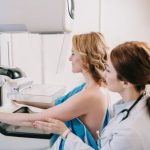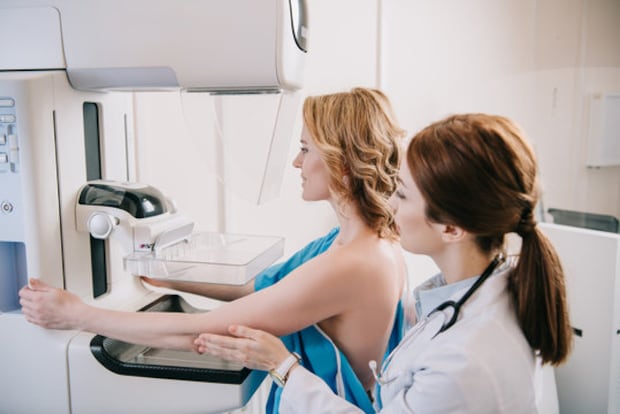

He breast cancer It is one of the most prevalent diseases among women worldwide. Although there is a common belief that family history is a determining factor, only 10% to 15% of cases are considered hereditary, according to oncologist Dr. Juan Carlos Samamé, oncologist creator of the portal Learning about cancer.
“We define hereditary breast cancer as one in which it is shown that there is a gene involved, a mutated gene that can be inherited from generation to generation,” the specialist clarifies. This small group of cases can be identified through genetic studies, especially when there is a direct family history of breast or ovarian cancer, or cases of breast cancer in men.
In line with this perspective, Dr. Sarah McLaughlin, an oncology surgeon at Mayo Clinic, also mentions that “about 5% of women who have breast cancer have a genetic mutation that predisposes them to suffer from the disease.” However, most cases do not have a clear genetic background, which has led the medical community to study the external and lifestyle factors that are contributing to the increase in breast cancer cases.
However, what is alarming is the growth of sporadic cases, that is, those that are not linked to a known genetic mutation. According to Dr. Samamé, “sporadic breast cancer, which occurs without any type of genetic background, represents the majority of cases.” This has led specialists to study in greater depth the external factors that could be behind this increase.
According to the report “Improving outcomes for women with triple negative breast cancer in Latin America – An extended analysis” from the Swedish Institute of Health Economics, Breast cancer is the most common neoplasm among Peruvian women with approximately 1,600 annual diagnoses. and one of the highest prevalences in the region of triple negative breast cancer (TNBC), an aggressive and fast-growing subtype, with a rate of 21%.
What factors are causing breast cancer?
“The majority of women do not have a history of breast cancer, they do not have an identifiable risk factor beyond their age and being a woman. It’s something we can’t avoid. Today we have many research efforts on benign biopsies to understand the long-term risks. We know that some biopsies that do not have cancer have atypical cells and these atypical lesions can increase the risk of breast cancer in the future,” warns Dr. Sarah McLaughlin.
One of the main reasons why breast cancer can develop in women with no known family history is related to environmental and lifestyle factors. Among the most notable, Dr. Samamé points out overweight and obesity as determining elements. “Overweight and obesity are very important conditions, especially in postmenopausal women. This group represents approximately 40% of the cases,” says the oncologist. Excess fatty tissue in the body increases levels of estrogen, a hormone that can stimulate the growth of breast cancer cells.

“It is crucial to banish tobacco and alcohol. Although we have made a lot of progress in the fight against tobacco, alcohol remains a pending issue, especially due to its link with cancer,” comments Dr. Samamé.
Similarly, Dr. McLaughlin adds that “excess body fat is a major risk factor for breast cancer, especially for disease recurrence.” This link between body weight and the risk of developing breast cancer has been confirmed by several studies, which also associate a sedentary lifestyle and poor diet with an increase in the incidence of this disease.
In addition, other factors such as smoking, excessive alcohol consumption, and exposure to carcinogens in the environment also contribute to the development of this disease. “We normally associate tobacco with lung cancer or alcohol with liver problems, but both are strongly linked to breast cancer,” explains Dr. Samamé.
More recently, studies have explored the possible relationship between breast cancer and exposure to chemicals found in everyday products, such as plastics. “There is evidence to suggest that carcinogens present in plastic containers can enter food and increase the risk of breast cancer,” says the specialist.
How does modern lifestyle impact the development of breast cancer?
In recent years, there has been a worrying increase in cases of breast cancer in young women, many of them under 40 years of age. Dr. Samamé mentions that this phenomenon could be related to changes in living habits and the environment. “Exposure to factors such as night work and lack of sleep have also been associated with an increase in breast cancer cases,” he says.
“We are seeing more cases of breast cancer in young women linked to hormonal factors, such as the use of oral contraceptives or late conception, which is being studied,” says Dr. Samamé. However, he emphasizes that there is still not enough evidence to say with certainty that hormonal contraceptives are a definitive risk factor. “It is necessary to continue investigating, but it is a possibility that we cannot ignore,” he adds.
“We are definitely seeing an increase in cancer in younger women, and I’m not sure we know why it’s happening. However, what seems clear is that a sedentary lifestyle, the consumption of unhealthy foods and exposure to environmental factors play an important role in this increase,” adds Dr. McLaughlin.
If detected early, breast cancer can be cured.
Although breast cancer can develop without a family history and is influenced by external factors, one of the most important aspects of its treatment is early detection. “The sooner breast cancer is diagnosed, the greater the chances of cure,” emphasizes Dr. Samamé.
In that sense, mammography remains the most effective screening method for women over 40 years of age. “Mammography is the cornerstone in the detection of breast cancer. It allows us to identify non-palpable lesions measuring millimeters long before they can be detected by touch,” says the specialist. However, he acknowledges that there is resistance to this type of testing due to the pain or discomfort they can cause. “There are still 34% of diagnosed women who did not undergo any prior check-up tests,” she laments.

Mammography remains the best way to identify the presence of abnormal breast tissue.
The oncologist also points out the importance of performing ultrasounds in younger women, especially those with dense breasts. “In women under 40 years of age, mammography is not as effective due to breast density, so we recommend ultrasounds for adequate detection,” he explains.
Despite this, Dr. McLaughlin points out that “approximately 60% of women have dense breast tissue, which makes it more difficult to detect cancer with a mammogram alone.” In these cases, it is recommended to complement it with an ultrasound or MRI, especially in women at higher risk.
What lifestyle should you lead to reduce the risk of developing breast cancer?
“It is essential that women understand that medical check-ups are key to early detection,” emphasizes Dr. Samamé. Fear of diagnosis often causes women to avoid having these tests. “It is paradoxical, but many women do not undergo check-ups for fear that something bad will be detected, when in reality they should go to be able to identify any anomaly in the early stages,” says the doctor.
Regarding lifestyle, Dr. Samamé suggests several changes that could reduce the risk of developing breast cancer. “It is crucial to banish tobacco and alcohol. Although we have made a lot of progress in the fight against tobacco, alcohol continues to be a pending issue, especially due to its link with cancer,” he comments. Likewise, it emphasizes the importance of eating a balanced diet, rich in fruits and vegetables, and maintaining regular physical activity. “It is not necessary to go to the gym. Simply walking more than 7,000 steps a day can be a huge benefit,” he says.
Dr. McLaughlin agrees and suggests several lifestyle changes that can help reduce the risk of developing breast cancer, such as “moderating alcohol consumption, avoiding tobacco, and following a Mediterranean-type diet, rich in vegetables and proteins.” “lean.” Likewise, he highlights the importance of regular exercise: “exercise is very useful, not only to maintain a healthy body weight, but also to reduce the risk of breast cancer.”
Finally, Dr. Samamé emphasizes the need to rest adequately. “Sleep is another factor that we often overlook, but having good sleep hygiene can help reduce the risk of developing breast cancer,” he concludes.